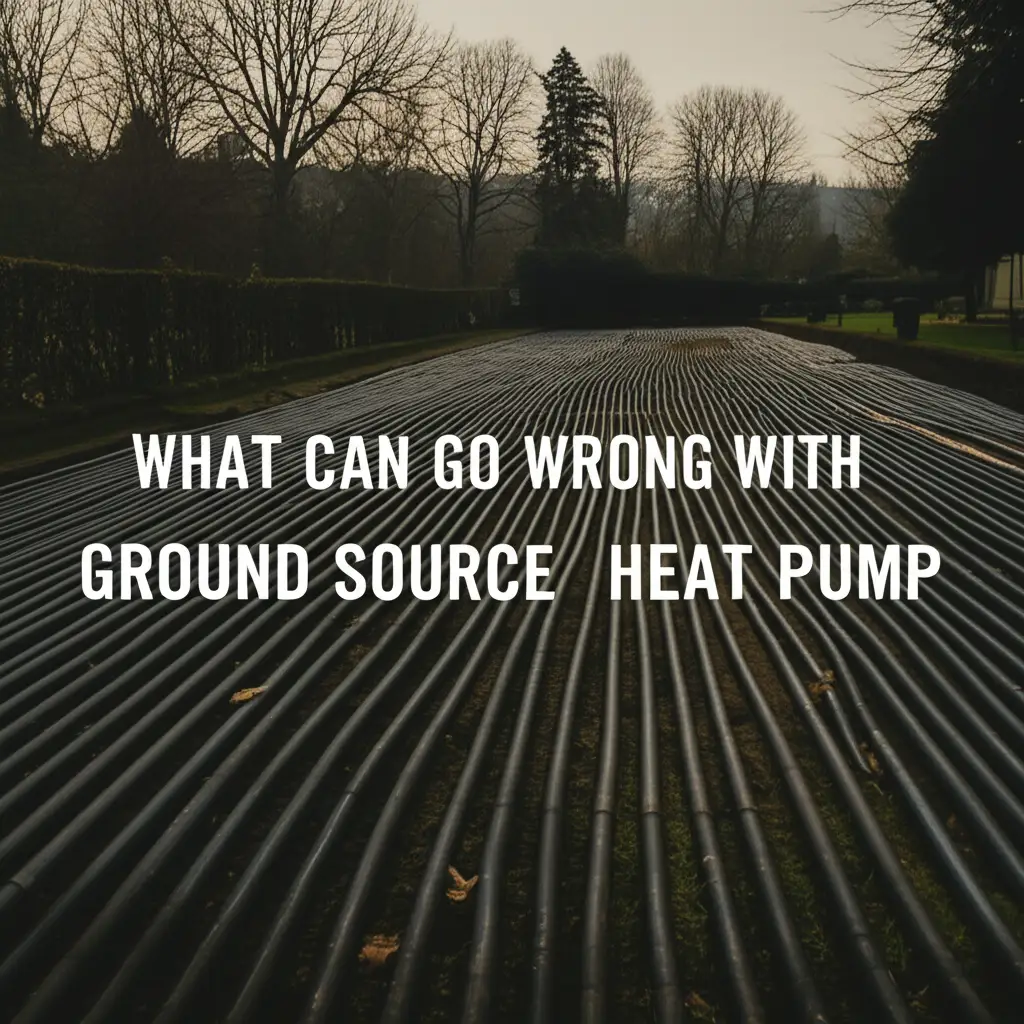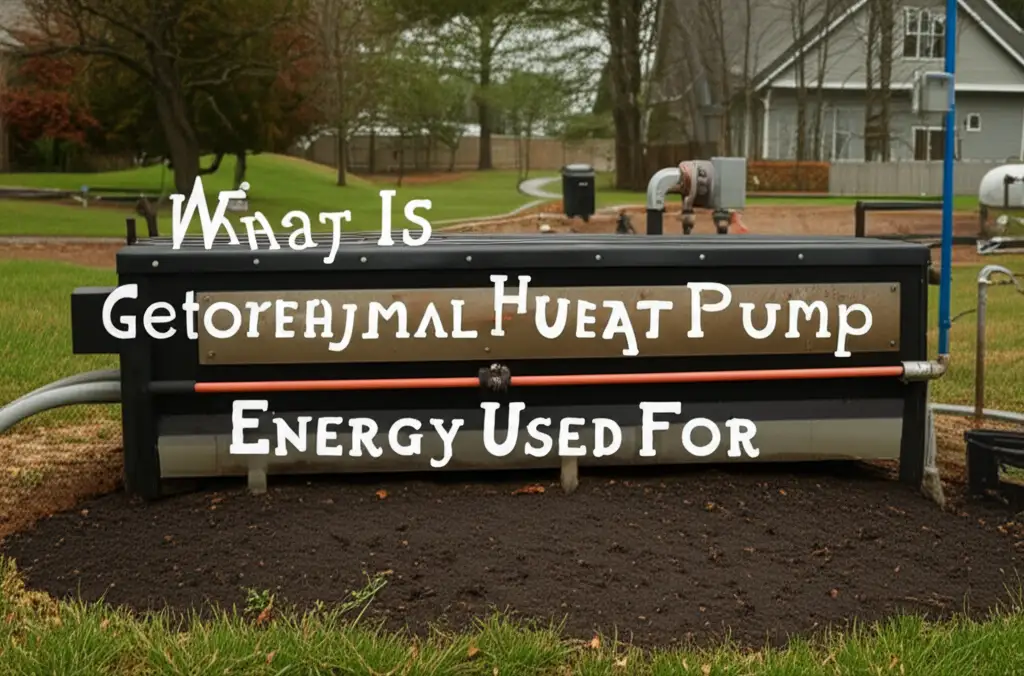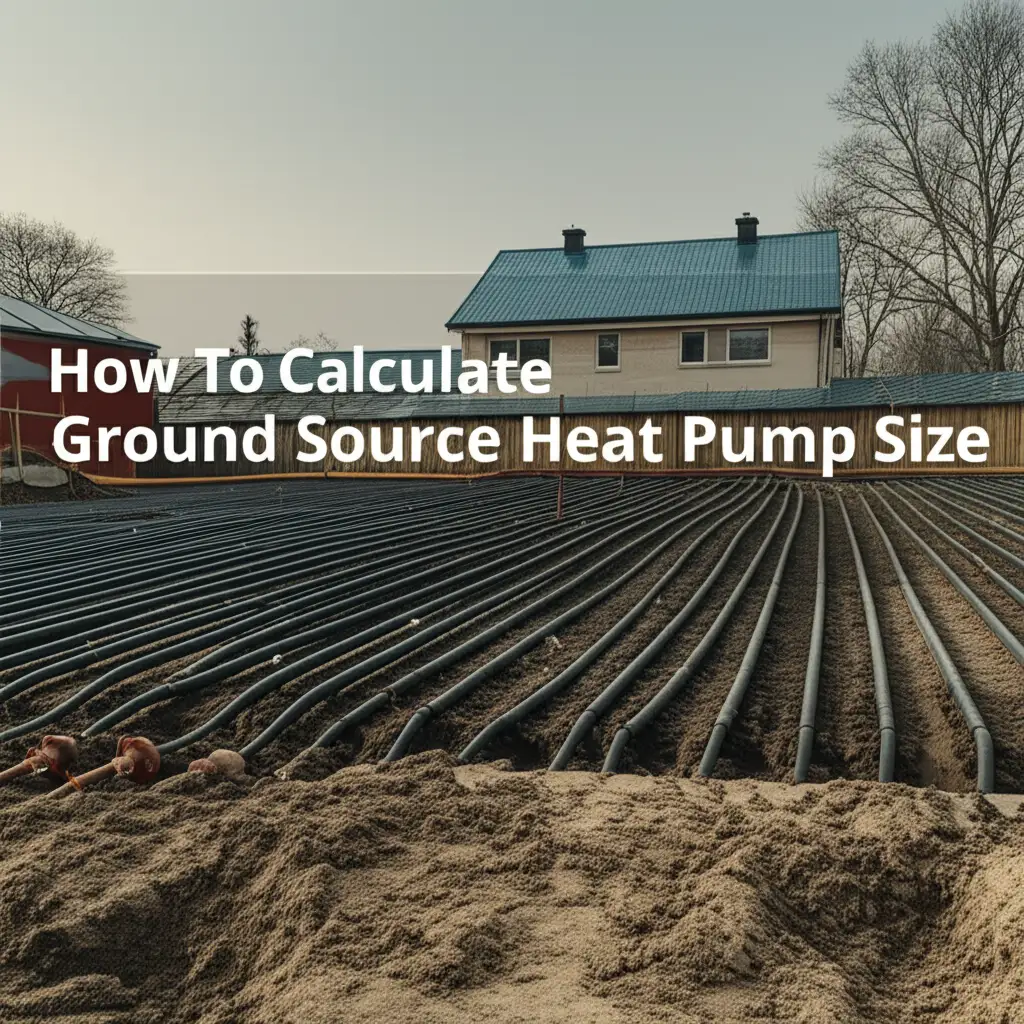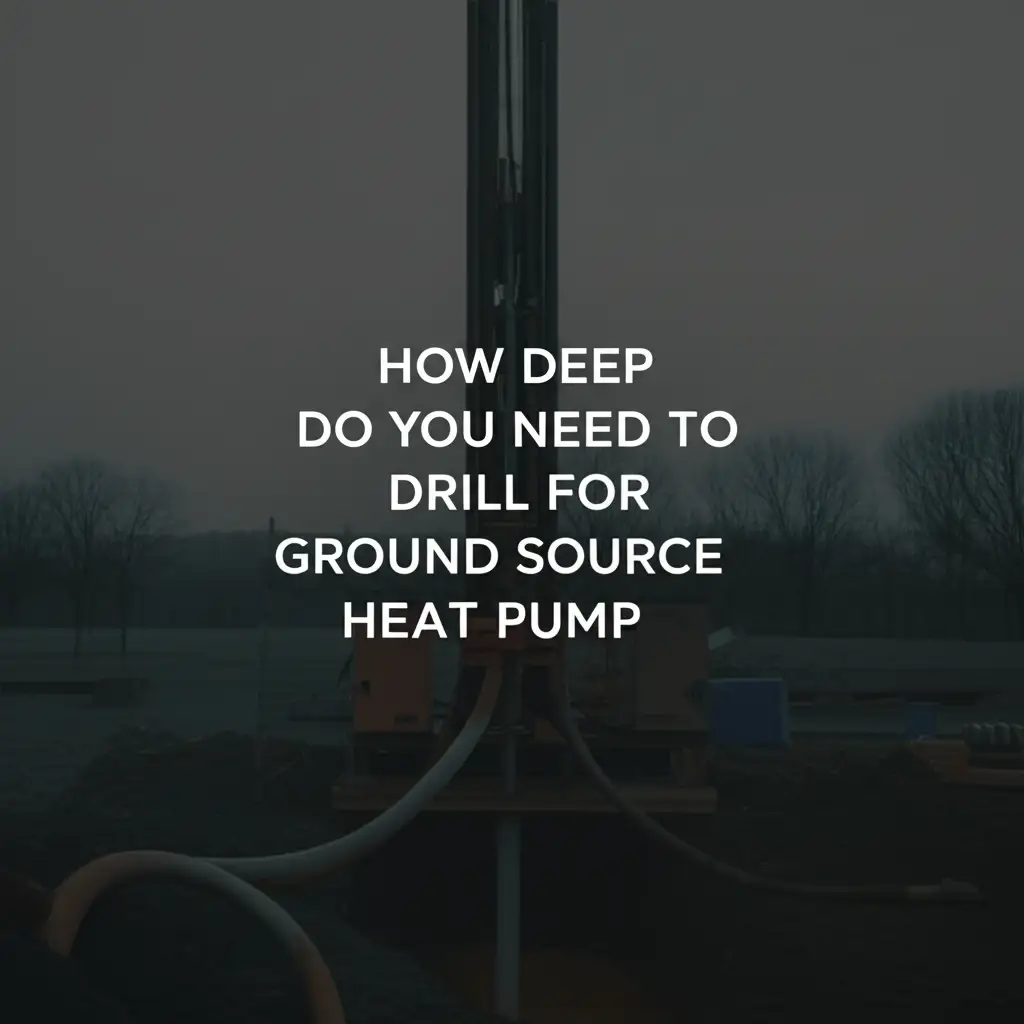· Todd Martin · Ground Source Heat Pumps · 15 min read
What Can Go Wrong With Ground Source Heat Pump

Ground Source Heat Pump Problems: What Can Go Wrong?
Ground source heat pumps (GSHPs) offer a promising path to efficient, eco-friendly heating and cooling. These systems tap into the stable temperature of the earth, providing consistent comfort. Many homeowners embrace them for their long-term savings and reduced carbon footprint. I find the technology truly impressive in its ability to leverage natural energy.
Yet, like any complex system, ground source heat pumps are not immune to issues. Understanding what can go wrong with ground source heat pump systems is crucial for current and prospective owners. It helps in informed decision-making and proper maintenance. This guide will explore common problems, from initial design flaws to operational malfunctions and maintenance oversights. We will look at how these issues can impact your system’s performance and your wallet.
Takeaway:
- Proper design and installation prevent most major ground source heat pump issues.
- Regular maintenance keeps your system running efficiently and extends its lifespan.
- Addressing problems early saves money and ensures consistent home comfort.
What are the main issues encountered with Ground Source Heat Pumps?
The primary issues with ground source heat pumps often stem from improper sizing, installation errors in the ground loop, and inadequate maintenance. These factors can lead to reduced efficiency, higher operating costs, and system failures, preventing the unit from delivering consistent heating or cooling.
Common Ground Source Heat Pump Installation Mistakes
Ground source heat pump performance relies heavily on precise installation. This phase is critical because errors made here can be difficult and expensive to fix later. I often see problems traced back to shortcuts or a lack of expertise during setup. These mistakes significantly impact system efficiency and longevity.
One major pitfall is improper ground loop installation. The pipes buried in the ground must be laid correctly to ensure good thermal contact with the earth. Issues like air pockets around the pipes, insufficient backfill, or using the wrong type of grout can impede heat transfer. This means the system cannot efficiently exchange heat with the ground. It struggles to meet your heating or cooling demands.
Another common mistake involves the integrity of the ground loops themselves. Damage to the pipes during excavation or backfilling can cause leaks. A leak in the ground loop is a serious problem. It leads to loss of the heat transfer fluid and reduces system pressure. This compromises the entire system’s ability to operate. Detecting and repairing these leaks often requires significant excavation, making it a costly fix.
Sizing Issues and Their Impact on GSHP Efficiency
The correct sizing of a ground source heat pump system is paramount for its optimal performance. This is one area where I cannot stress enough the importance of getting it right. An improperly sized system will inevitably lead to problems, regardless of installation quality. Sizing involves matching the heat pump’s capacity to your home’s heating and cooling needs. It also involves designing a ground loop adequate for the heat exchange required.
An undersized heat pump struggles to meet your home’s thermal demands. It will run almost constantly, leading to excessive wear on components. This constant operation can also cause your auxiliary heating system to engage more frequently. This increases your energy bills significantly. You might wonder why is my ground source heat pump so expensive to run. Oftentimes, inadequate sizing plays a major role in this issue.
Conversely, an oversized heat pump cycles on and off too frequently, a phenomenon known as short cycling. This leads to inefficient operation and reduced dehumidification in cooling mode. Short cycling also puts undue stress on the compressor, shortening its lifespan. It does not save energy, but rather wastes it due to frequent startups. Balancing capacity with demand is key for long-term efficiency and comfort.
Ground Loop Field Design Flaws
The ground loop field is the heart of a ground source heat pump system. Its design directly dictates how efficiently the system can transfer heat with the earth. Flaws in this design can severely cripple performance. I have seen many instances where a seemingly well-installed system underperforms due to poor planning of the ground loop. This is a critical area that demands expert attention.
One significant flaw is an insufficient ground loop length. The amount of pipe buried in the ground must be adequate to extract or dissipate the required amount of heat. If the loop is too short for your home’s load, the ground temperature around the pipes can become thermally depleted (in heating mode) or overloaded (in cooling mode). This reduces the heat pump’s efficiency and capacity, causing it to work harder and consume more electricity. This leads to concerns like how much electricity does ground source heat pump use.
Another design flaw involves the spacing of the boreholes or trenches. If loops are placed too close together, they can interfere with each other’s thermal exchange zones. This reduces the effective area for heat transfer, leading to similar issues as an undersized loop field. Consideration for soil type, moisture content, and geological conditions is also vital. Different soil types have varying thermal conductivities, influencing the required loop length and configuration. For example, the depth of your boreholes also matters significantly, impacting how much heat can be exchanged. Understanding how deep does ground source heat pump need to be is a fundamental part of proper design.
Heat Pump Unit Component Failures
While the ground loop often gets the most attention, the indoor heat pump unit itself contains various mechanical and electrical components that can fail. These failures can halt your system’s operation or severely reduce its effectiveness. I’ve seen firsthand how a single component failure can bring an entire system to a standstill, causing unexpected discomfort.
Compressor Problems
The compressor is arguably the most vital component of the heat pump. It circulates the refrigerant and raises its temperature and pressure. Compressor failure is one of the most expensive repairs for any heat pump. It can occur due to electrical issues, continuous short cycling, or lubrication problems. Signs of a failing compressor include strange noises, lack of heating or cooling, or the system not turning on at all. Regular maintenance can often catch early signs of wear.
Refrigerant Leaks
Refrigerant is the medium that absorbs and releases heat in the system. Leaks can occur in the coils, lines, or fittings within the heat pump unit. A refrigerant leak reduces the system’s capacity, forcing it to work harder to achieve the desired temperature. This leads to reduced efficiency and potentially higher energy bills. If you notice your system is not cooling or heating effectively, or if you hear a hissing sound, a refrigerant leak might be the culprit. Professional detection and repair are necessary, as refrigerant handling requires specialized training.
Circulation Pump Issues
Ground source heat pumps rely on circulation pumps to move the heat transfer fluid through the ground loop and the indoor unit. If these pumps fail or malfunction, the fluid stops flowing. This prevents heat exchange. This issue can cause the entire system to shut down. Signs include unusual noises from the pump, a lack of fluid circulation, or system error codes. Regular checks on fluid levels and pump operation are important.
Electrical and Control System Malfunctions
The sophisticated control systems and electrical components are essential for the heat pump’s operation. Issues can range from faulty thermostats and sensors to wiring problems or control board failures. These malfunctions can lead to erratic operation, incorrect temperature readings, or complete system shutdown. Diagnosing electrical issues requires a skilled technician to avoid further damage or safety hazards.
Reduced System Efficiency and High Operating Costs
One of the most disappointing things for a ground source heat pump owner is when the system doesn’t deliver on its promise of low operating costs. When a GSHP is costing more than expected, it often points to underlying efficiency problems. I frequently receive calls from homeowners asking, “why does my ground source heat pump cost so much to run?” The answer usually lies in a combination of factors that impact how efficiently the system converts electricity into heating or cooling.
Several issues contribute to reduced efficiency. As discussed, improper sizing and ground loop design are major culprits. If the ground loop cannot efficiently exchange heat, the compressor has to work harder and longer. This consumes more electricity. Dirty air filters or heat exchanger coils also restrict airflow and heat transfer. This forces the fan and compressor to labor excessively. This increased workload directly translates to higher energy consumption.
Low refrigerant levels, due to leaks, reduce the system’s ability to move heat effectively. This makes it run longer to achieve the desired temperature, driving up electricity usage. Issues with the circulation pump or air in the ground loop can also impede fluid flow and heat transfer. This compromises efficiency. Ultimately, if your GSHP seems to be consuming more power than it should, a professional audit is necessary to pinpoint the exact cause and rectify it. Addressing these issues can restore your system’s energy-saving benefits.
Preventable Maintenance Oversights
Many problems with ground source heat pumps are preventable through regular, diligent maintenance. Neglecting this crucial aspect can lead to gradual performance degradation and costly repairs down the line. I always emphasize to homeowners that routine care is an investment, not an expense. It protects their initial significant investment in the system.
One fundamental oversight is failing to clean or replace air filters regularly. Dirty filters restrict airflow, forcing the indoor fan motor to work harder. This increases electricity consumption and reduces heating or cooling capacity. It also puts undue strain on the entire system. I recommend checking filters monthly and replacing them every 1-3 months, depending on usage and home conditions.
Another common neglect is ignoring the ground loop fluid. While closed-loop systems are largely sealed, fluid levels and pressure should be checked periodically. Over time, a small amount of fluid can be lost, or air can enter the system. This reduces circulation and heat transfer efficiency. Open-loop systems, which draw water from a well, require more frequent maintenance. They need cleaning of strainers and filters to prevent sediment buildup and fouling of the heat exchanger. Neglecting these can severely impact performance.
Failure to schedule annual professional inspections is also a major oversight. A certified technician can identify minor issues before they escalate into major problems. They can check refrigerant levels, electrical connections, compressor health, and overall system calibration. This proactive approach ensures your GSHP operates at peak efficiency and extends its operational life. Skipping these checks is a gamble that rarely pays off in the long run.
Addressing Unexpected Noise and Vibration
Ground source heat pumps are known for being relatively quiet compared to air source units, as the loudest components are usually indoors. However, if your system starts making unusual noises or excessive vibrations, it is a clear sign that something is amiss. These auditory cues can range from minor annoyances to indications of serious mechanical problems. Ignoring them can lead to further damage.
One common source of noise is the circulation pump. If the pump is old, failing, or experiencing cavitation (air bubbles in the fluid), it can produce humming, grinding, or gurgling sounds. Air in the ground loop can also cause sloshing or gurgling noises as the fluid circulates. These sounds indicate inefficient flow and potential wear on the pump. Addressing air in the system often involves proper purging by a professional.
The compressor, while usually enclosed and insulated, can also generate unusual noises if it’s struggling. A failing compressor might produce loud humming, clanking, or grinding sounds. These indicate internal wear or electrical issues. Fan motors within the indoor unit can also become noisy if bearings wear out or if the fan blades are out of balance. Loose panels or ducts can vibrate, creating rattling sounds that might seem like they come from the unit. A thorough inspection by a qualified technician can help pinpoint the exact source of the noise. They can then recommend the necessary repairs or adjustments to restore quiet operation.
External Environmental and Ground Conditions
While much of a GSHP’s reliability comes from the stable underground temperatures, external environmental factors and unforeseen ground conditions can still pose challenges. These are less about mechanical failure and more about the environment in which the system operates. Understanding these can help manage expectations and mitigate potential issues.
One such factor is thermal depletion of the ground. This occurs when the ground loop consistently extracts more heat than the ground can naturally replenish, typically in heating-dominated climates with undersized loop fields. Over many years, this can lead to a slight drop in ground temperature around the loops. This reduces the heat pump’s efficiency and capacity. While rare in properly designed systems, it is a consideration for long-term performance.
Unforeseen geological conditions during installation can also lead to problems. Encountering unexpected rock formations, high water tables, or unstable soil can significantly increase drilling costs and complexity. It might even necessitate a change in the loop design, such as switching from a horizontal to a vertical loop. While this is primarily an installation-phase challenge, it can impact project timelines and budgets if not properly assessed beforehand. This underscores why a thorough geological survey is a critical first step.
For open-loop ground source heat pumps, water quality is a continuous external factor. If the well water contains high levels of minerals, sediment, or corrosive elements, it can lead to fouling, scaling, or corrosion of the heat exchanger. This reduces efficiency and can cause blockages. Regular water testing and appropriate filtration or treatment systems are essential for these types of installations to prevent long-term damage and maintain performance.
Unexpected Financial Costs and ROI Challenges
Investing in a ground source heat pump is a significant financial commitment. While the promise of low operating costs and a quick return on investment (ROI) is attractive, unexpected financial costs can arise. These can challenge the anticipated savings. I find it important for homeowners to be aware of these potential financial pitfalls, just as much as technical malfunctions.
One major source of unexpected cost is post-installation repairs, especially if major components like the compressor or ground loop fail. The initial installation cost of a GSHP is higher than traditional systems. Repair costs can also be substantial due to the specialized nature of the equipment and the expertise required. For instance, if a ground loop leak occurs, the excavation required to fix it can be very expensive. These unforeseen repairs can significantly delay or diminish your calculated ROI.
Higher than anticipated operating costs are another common financial challenge. As discussed earlier, issues like improper sizing, inefficient ground loop design, or lack of maintenance can cause the heat pump to consume more electricity than predicted. This erodes the expected savings on utility bills. If your GSHP is constantly struggling to heat or cool, or if the auxiliary heat is always running, your electricity costs will climb. You might then ask yourself, “why is my ground source heat pump so expensive to run?” This becomes a primary financial concern.
Finally, the long-term ROI can be impacted if the system’s lifespan is shortened due to neglect or continuous issues. A well-maintained GSHP can last 20-25 years for the indoor unit and 50+ years for the ground loop. However, frequent breakdowns or a need for premature replacement due to unaddressed problems will negate much of the financial benefit. Regular maintenance and prompt attention to any signs of trouble are the best ways to protect your investment and ensure a favorable ROI.
Frequently Asked Questions
How long do ground source heat pumps last?
Ground source heat pump components have different lifespans. The ground loop itself is highly durable, often lasting 50 years or more. The indoor heat pump unit, including the compressor and pumps, typically lasts 20 to 25 years. This longevity is comparable to or better than traditional HVAC systems, offering long-term reliability.
Can ground source heat pumps run out of heat?
No, ground source heat pumps do not “run out” of heat. They transfer existing heat from the ground. However, if the ground loop is undersized for the building’s demand, or if the soil has poor thermal properties, the ground temperature around the loops can slightly decrease over time in heating mode. This reduces efficiency but does not deplete the heat source.
Are ground source heat pumps noisy?
Ground source heat pumps are generally very quiet during operation. Most of the noise is generated by the compressor and circulation pumps, which are typically located indoors in a utility room or basement. Unlike air source heat pumps, there is no noisy outdoor fan unit. Any significant increase in noise usually indicates a problem.
How often do ground source heat pumps need servicing?
Ground source heat pumps require less frequent servicing than conventional HVAC systems, but regular maintenance is still important. It is recommended to have a professional inspection and tune-up every 3 to 5 years. Homeowners should regularly check and clean air filters, and ensure proper airflow around the indoor unit.
Can a ground source heat pump provide enough hot water?
Yes, a ground source heat pump can provide all of a home’s hot water. They can integrate with a dedicated hot water tank. Many systems also include a “desuperheater” which provides a portion of the hot water for free when the unit is in cooling mode. For higher demands, a small electric backup heater may be included.
Conclusion
Ground source heat pumps represent a significant leap forward in sustainable home heating and cooling. They offer impressive efficiency and long-term savings. However, understanding what can go wrong with ground source heat pump systems is essential for any owner or prospective buyer. My goal was to provide clarity on these potential issues. From initial design and installation mistakes to mechanical failures and maintenance oversights, each potential problem has a specific cause and solution.
The most common issues stem from improper sizing, flawed ground loop design, and a lack of consistent maintenance. These can lead to reduced efficiency, higher operating costs, and even system breakdowns. By prioritizing a reputable installer, ensuring thorough site assessment, and committing to a routine maintenance schedule, you can significantly mitigate these risks. Proactive care ensures your ground source heat pump operates reliably and efficiently for decades. Ultimately, being informed and vigilant is your best defense against potential ground source heat pump problems.
- ground source heat pump
- GSHP problems
- heat pump repair
- geothermal issues
- energy efficiency
- home heating
- HVAC maintenance





